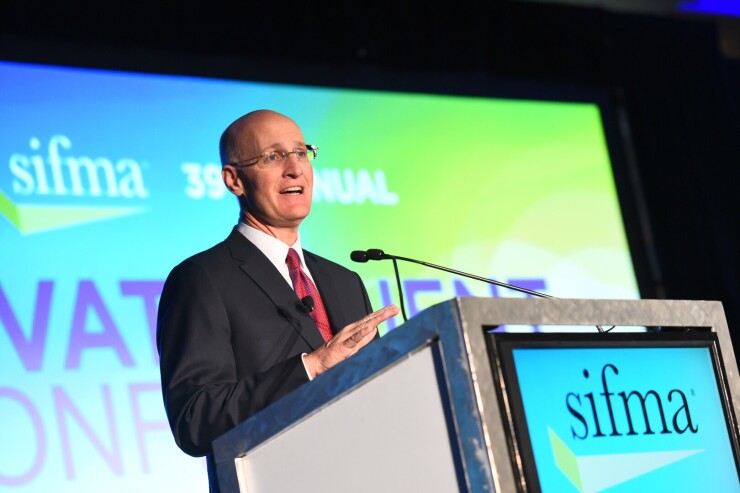
Merrill Lynch will continue its unconventional hiring process — looking for advisors from inside Bank of America to save money, improve advisor retention rate, and capitalize on “home-grown talent,” the wirehouse’s president, Andy Sieg, affirmed on Monday.
“We have for many years been out of the advisor recruiting game, because we don't think it is a good formula for clients or shareholders, or the firm overall,” Seig said at the virtual Morgan Stanley U.S. Financials, Payments & CRE Conference.
Last month, Merrill
The company recently came under fire when it was
New York-based Merrill’s decision to recruit from within the company may change the demographics of its advisor cohort.
With its emphasis on coaching and retaining advisors, the new program has the potential to diversify Merrill advisors, according to Dana Wilson, an advisor and founder of CHIP, a database of Black and Latinx financial planners based in the New York City metro area.
“I have mixed feelings,” said Wilson, who worked as an advisor at Merrill in 2012. “I know they’ve been trying to build more diversity, and I’m always a champion of that. However, if you do not have enough diversity in-house, and now you’re saying that you’re only going to hire or train from within, then, obviously, how are you going to continue to increase the inclusion?”
But she appreciates that the wirehouse is trying to retain and focus on new hires, which could build a better, more supportive atmosphere for Black and other minority advisors.
Recruiting, she said, is easy. Harder is escaping “this dumpster dive of hiring, then not really paying attention to these individuals,” Wilson said. “Typically, these people are Black and Latinx who kind of get the short end of the stick in not being able to get promoted or be put on teams.”
Merrill
Macro Consulting Group is also returning to LPL Financial as its broker-dealer after parting ways three years ago
Black advisors comprise 4.5% of their workforce, with Hispanic and Latino advisors at 9% and Asian advisors at 6.5%, according to Merrill’s data.
Advisor recruiter Mark Elzweig believes in-house hires will lead to a much younger cohort of advisors than at other wirehouses.
“This gives them more ability to shape customer product offerings,” Elzweig told Financial Planning in an email. “It also ensures that departing advisors will take only a fraction of their books elsewhere.”
He also said it is unlikely peer firms will follow suit, as their advisors require a higher level of independence.
At the conference, Sieg asserted that the program and in-house hiring process will help cultivate “the kind of culture we want to have.”
“One of our principles is that cultures can only be built, they can’t be bought,” Sieg said.






